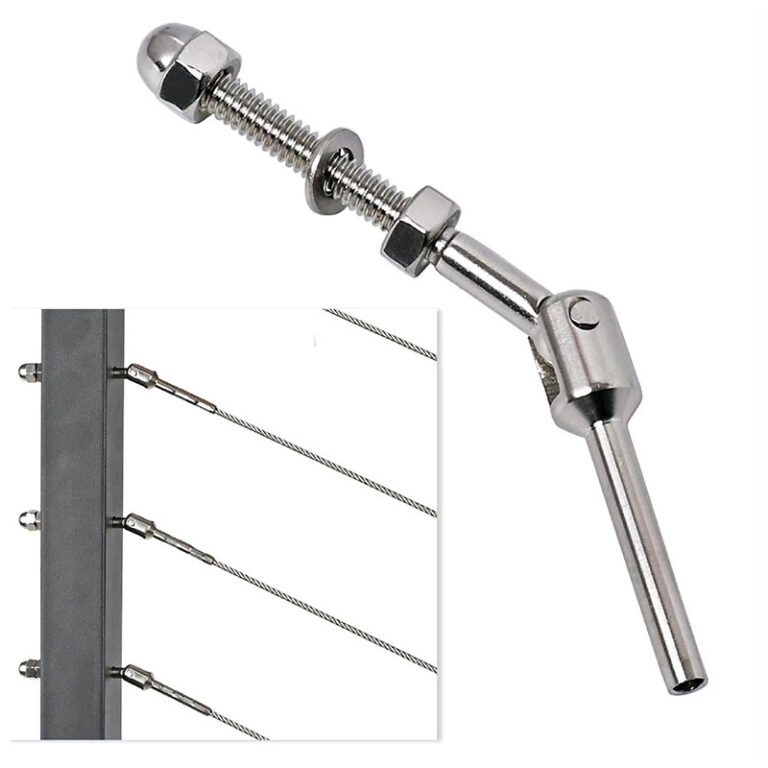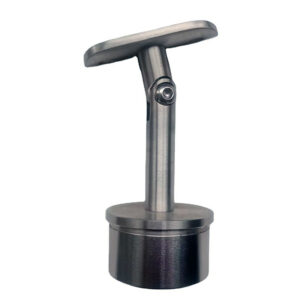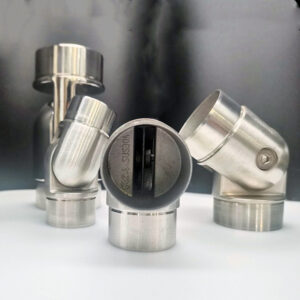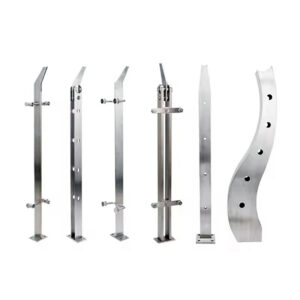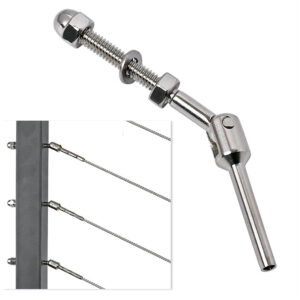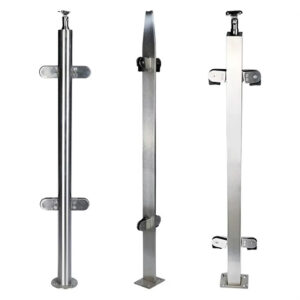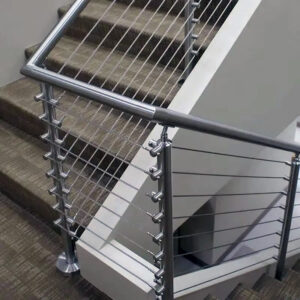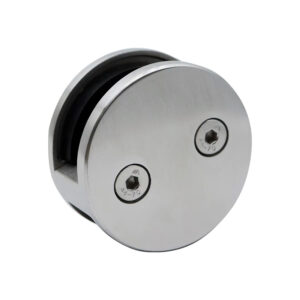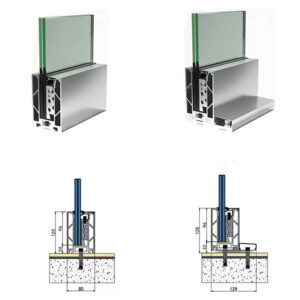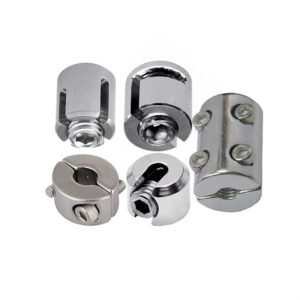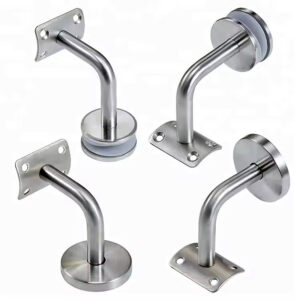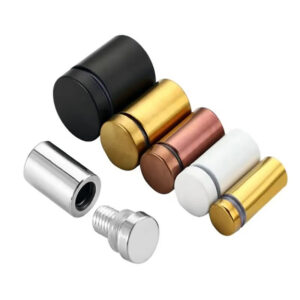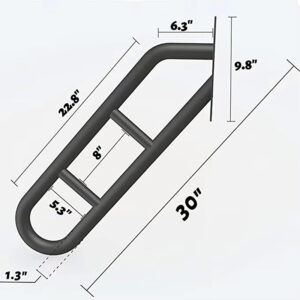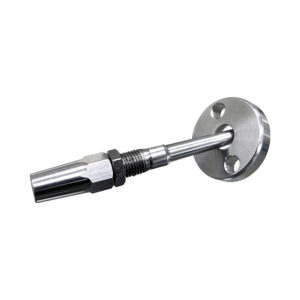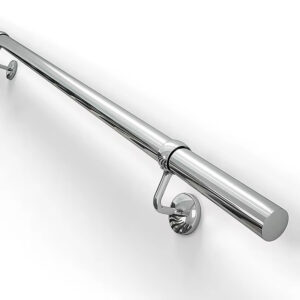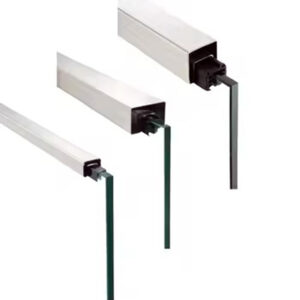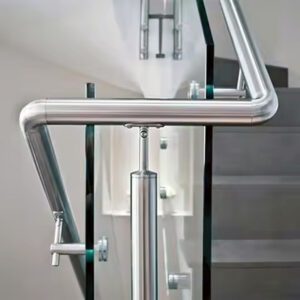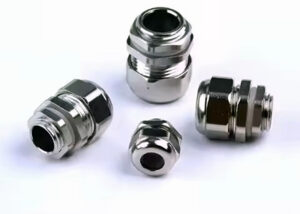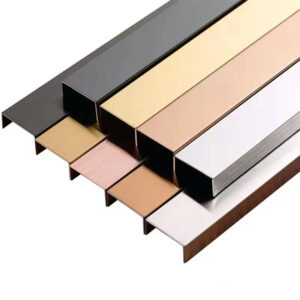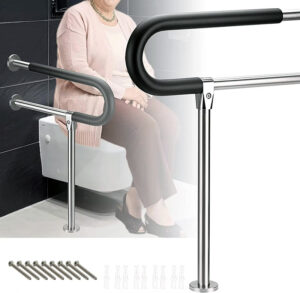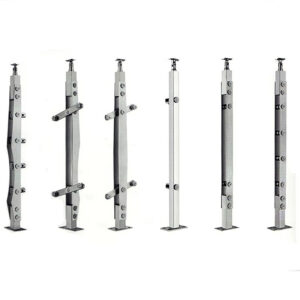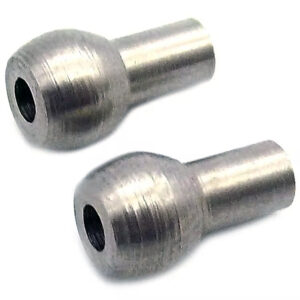Finding reliable through post cable hardware that actually performs as specified shouldn’t be a gamble. After 23 years of manufacturing precision railing components, we’ve seen too many projects delayed by hardware that doesn’t fit, cables that won’t tension properly, or systems that fail inspection. The right through-post cable system combines proven engineering with installation efficiency—delivering code-compliant results without the field headaches that eat into project timelines and budgets.
Core Through Post Cable Hardware Components
Complete Through-Post Cable Systems
Through post cable hardware requires precision-engineered components that work together seamlessly. Our systems include stainless steel posts with integrated cable channels, tensioning hardware that maintains proper cable loads, and mounting systems designed for various substrate conditions. Each component meets structural load requirements while simplifying field installation.
Post Configurations: Round and square profiles from 2″ to 4″ diameter, with pre-drilled cable passages sized for 1/8″ to 3/16″ cables. Internal cable routing eliminates external hardware exposure and creates clean sight lines. Wall thickness specifications ensure structural integrity under lateral loads per IBC requirements.
Cable Tensioning Systems: Adjustable tensioners with 316 stainless construction handle environmental exposure without performance degradation. Spring-loaded mechanisms maintain consistent cable tension through thermal cycling. Tool requirements limited to standard hex keys for simplified maintenance.
Marine Grade Through-Post Cable ODM Solutions
Marine environments demand 316L stainless construction with enhanced corrosion resistance. Our marine grade through-post cable ODM capabilities address saltwater exposure, high humidity, and temperature cycling that destroys standard hardware within months.
Material Specifications: 316L stainless throughout load-bearing components, with Inconel tensioning springs for extended service life. Electropolished surfaces reduce corrosion initiation points. AISI certification ensures material traceability for critical applications.
Custom Engineering: Project-specific post spacing, cable configurations, and mounting details. Our 23 years of experience includes offshore platforms, waterfront facilities, and coastal commercial projects where standard hardware fails prematurely. Design validation includes finite element analysis for complex loading conditions.
Technical Specifications & Performance Data
| Component | Material Grade | Load Rating | Cable Capacity | Installation Time |
|---|---|---|---|---|
| 2″ Round Posts | 316L Stainless | 200 lbs lateral | 6 cables max | 45 min/post |
| 3″ Square Posts | 316L Stainless | 350 lbs lateral | 8 cables max | 60 min/post |
| Tensioning Hardware | 316L/Inconel | 500 lbs tension | Single cable | 15 min/cable |
| Base Mounting | 316L Stainless | 400 lbs moment | N/A | 30 min/base |
Precision Through-Post Hardware Manufacturing
Manufacturing precision directly impacts field installation success. Our CNC machining centers maintain ±0.002″ tolerances on cable passage alignment, ensuring consistent cable runs without binding. Post-mounted tensioning hardware aligns perfectly with internal cable routing, eliminating field modification.
Quality Control Metrics: 99.7% first-pass dimensional compliance across all components. Material certification includes mill test reports for every heat lot. Surface finish specifications prevent galvanic corrosion in mixed-metal applications.
Batch Consistency: Production runs maintain identical specifications across hundreds of components. This consistency reduces inventory complexity for distributors and eliminates fit-up issues during installation. Contractors report 40% faster installation times compared to mixed-source hardware systems.
Commercial Through Post Systems Applications
Multi-Unit Residential Projects
Commercial through post systems excel in residential applications requiring consistent aesthetics across multiple units. Standardized components reduce material costs while meeting accessibility requirements. Our modular approach allows contractors to stock fewer SKUs while handling diverse railing configurations.
Cost Efficiency: Standardized post spacing and cable configurations reduce engineering time by 60%. Pre-fabricated components arrive ready for installation with minimal field adjustment. Material waste typically under 5% due to precise manufacturing and planning integration.
Code Compliance: Systems meet IBC intermediate rail requirements with proper cable spacing. Load testing documentation simplifies inspection approval. Handrail integration maintains ADA compliance without compromising cable system aesthetics.
Commercial & Industrial Installations
Large-scale projects demand reliable supply chains and consistent performance. Our commercial through post systems handle high-volume requirements with predictable delivery schedules. Manufacturing capacity supports projects requiring hundreds of linear feet without compromising quality or timelines.
“Modular railing systems reduce project installation time up to 35% compared to custom fabrication approaches.” —National Association of Commercial Contractors
Project Scale Benefits: Volume pricing structures reward large projects without sacrificing component quality. Staged delivery coordinates with construction schedules. Technical support includes on-site consultation during critical installation phases.
Long-Term Performance: Industrial environments test hardware durability through vibration, chemical exposure, and heavy use. Our 23 years of manufacturing experience includes power plants, manufacturing facilities, and transportation infrastructure where failure isn’t acceptable.
| Application Type | Typical Post Spacing | Cable Count | Expected Service Life |
|---|---|---|---|
| Residential Decks | 6-8 feet | 4-6 cables | 25+ years |
| Commercial Stairs | 4-6 feet | 6-8 cables | 20+ years |
| Industrial Platforms | 8-10 feet | 6-10 cables | 15+ years |
| Marine Applications | 6-8 feet | 4-8 cables | 10+ years |
▶ Get Technical Specifications ◀
Custom Through Post Manufacturing Solutions
Engineering Support & Design Integration
Complex projects require engineering support beyond standard component catalogs. Our custom through post manufacturing combines proven components with project-specific modifications. Design assistance includes structural calculations, code compliance verification, and installation sequence planning.
Technical Services: Load analysis for non-standard configurations, material selection for specific environments, and compatibility verification with existing structures. Our engineers provide sealed drawings where structural integration requires professional oversight.
Prototyping Capabilities: Sample fabrication allows testing fit and finish before full production commits. Prototype feedback integration ensures final components meet exact project requirements. This approach prevents costly field modifications on critical path activities.
Supply Chain & Inventory Management
Reliable delivery schedules keep projects moving forward. Our manufacturing operates with 4-6 week standard lead times, with expedited options for urgent requirements. Inventory management support helps distributors optimize stock levels without tying up excessive capital.
Distributor Support: Minimum order quantities balance inventory efficiency with cash flow requirements. Technical training ensures proper component selection and application guidance. Marketing support materials help distributors communicate value propositions effectively.
Direct Contractor Sales: Large projects qualify for direct sales with volume pricing. Delivery coordination matches construction schedules. Post-delivery support includes installation troubleshooting and warranty administration.
▶ Discuss Project Requirements ◀
Installation Efficiency & Technical Support
Modular Assembly Advantages
Through post cable fabrication 316L components arrive ready for assembly with standard tools. Pre-drilled cable passages eliminate field drilling through stainless steel posts—a time-consuming operation requiring specialized equipment. Integrated tensioning hardware mounts directly to posts without additional brackets.
Tool Requirements: Standard impact drivers, hex key sets, and torque wrenches handle entire installation. No specialized cable routing tools or post-drilling equipment needed. This simplifies contractor tool requirements and reduces setup time.
Installation Sequence: Posts install first with standard mounting hardware. Cables route through integrated passages without threading difficulties. Final tensioning adjusts with accessible hardware requiring minimal clearance.
Quality Assurance & Performance Validation
Manufacturing quality control prevents field problems that delay project completion. Each component underwent dimensional verification, material certification, and surface finish inspection before shipment. This front-end quality control eliminates installation delays caused by defective hardware.
Performance Testing: Cable tension verification ensures proper structural performance. Post mounting systems tested to 125% of design loads. Corrosion resistance validation through salt spray testing exceeds ASTM standards.
Warranty Coverage: Material and manufacturing defects covered for 10 years. Installation support includes technical consultation to prevent application errors. Replacement component availability maintained for 15+ years post-delivery.
Frequently Asked Questions
How do I select the right material grade for my project environment?
Standard Applications: 304 stainless handles most interior and protected exterior applications cost-effectively. Atmospheric corrosion resistance suitable for urban and suburban installations with normal maintenance.
Harsh Environments: 316L stainless required for coastal areas, industrial facilities, or anywhere chloride exposure occurs. Higher initial cost offset by extended service life and reduced maintenance requirements.
Marine Applications: 316L minimum, with electropolished surfaces for maximum corrosion resistance. Consider Inconel springs and fasteners for ultimate durability in saltwater environments.
What installation time should I expect for typical projects?
Installation rates vary with project complexity and crew experience. Typical metrics from contractor feedback:
- Straight runs: 15-20 linear feet per crew-day for experienced installers
- Complex configurations: 10-15 linear feet per crew-day with corners and level changes
- Learning curve: First-time installations typically 25% slower until crew develops familiarity
Pre-fabricated components and clear installation guides minimize learning curves. Technical support available during initial installations.
How do through-post systems compare to surface-mounted alternatives?
Aesthetic Advantages: Clean sight lines without external hardware. Cable routing through posts creates minimalist appearance preferred in modern architecture.
Structural Benefits: Post-integrated systems distribute loads more effectively than surface-mounted hardware. Reduced stress concentrations improve long-term reliability.
Installation Considerations: Through-post systems require precise post placement but eliminate complex surface mounting details. Overall installation time typically comparable with superior finished appearance.
What inventory strategy works best for distributors?
Core Component Stocking: Focus on standard post sizes, common cable configurations, and universal mounting hardware. These components handle 80% of typical applications.
Special Order Items: Custom lengths, non-standard configurations, and specialty hardware available with 4-6 week lead times. This approach optimizes inventory investment while maintaining capability.
Technical Support: Our 23 years of experience supports distributors with application guidance, technical specifications, and troubleshooting assistance.
▶ Connect with Technical Support ◀
System Integration & Compatibility
Coordinating with Other Building Systems
Through post cable hardware integrates with various structural and architectural systems. Coordination requirements include structural attachment details, electrical routing for lighting integration, and waterproofing where posts penetrate horizontal surfaces.
Structural Integration: Post base mounting requires coordination with structural loading. Concrete embedment details, steel connection specifications, and wood framing attachments each require specific hardware selections.
Architectural Coordination: Handrail heights, sight line requirements, and finish coordination affect component selection. Early coordination prevents conflicts during installation when changes become expensive.
| System Integration | Coordination Points | Lead Time Impact | Cost Considerations |
|---|---|---|---|
| Structural Steel | Connection details | Standard | Material upgrades |
| Concrete | Embed placement | +2 weeks | Custom anchoring |
| Wood Framing | Blocking requirements | Standard | Reinforcement |
| Waterproofing | Penetration sealing | +1 week | Specialized products |
Performance Validation & Code Compliance
Building code compliance requires proper component selection, installation per manufacturer specifications, and inspection documentation. Our systems meet IBC structural requirements with testing documentation to support permit approval.
Testing Documentation: Structural load testing, corrosion resistance validation, and component durability testing available for code officials. Professional engineer certification available for complex applications.
Inspection Support: Installation guides include inspection checkpoints and acceptance criteria. Technical support available during inspection processes to address officer questions or concerns.
Working with Esang Metal means accessing 23 years of manufacturing expertise, proven component reliability, and technical support that keeps projects moving forward. Our through post cable hardware delivers the performance contractors need with the engineering backup that ensures long-term success.
